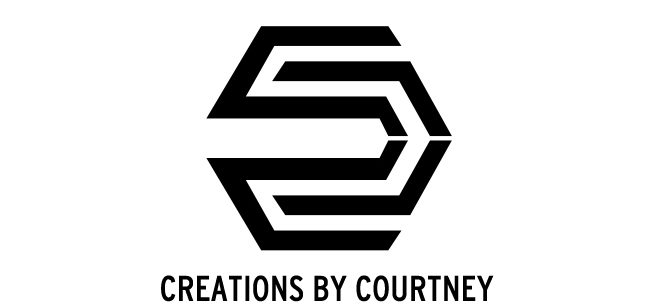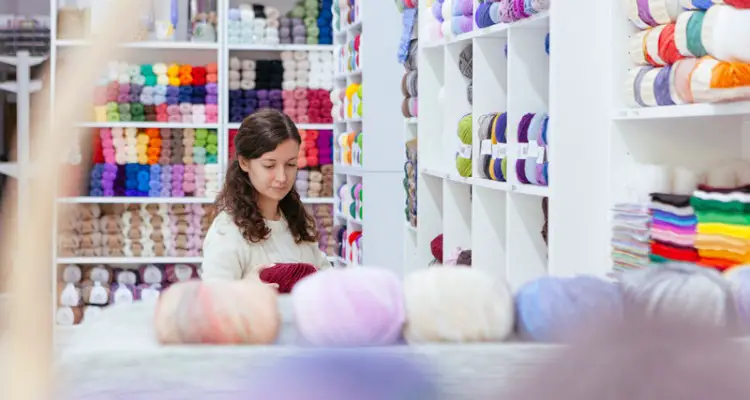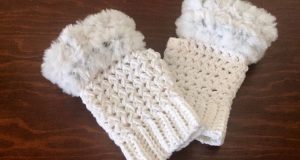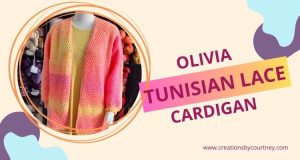Choosing yarn for a crochet garment can become a hot topic. You may have heard the term “Yarn snob,” which typically refers to someone that believes that hand dyed, natural fibers are better than man made yarns.
I’m going to present several factors to consider when choosing yarn to make a crochet sweater or top rather than telling you, “X is the best ever yarn to use.” It’s just not possible to declare the best yarn to use for a crochet garment. Every crocheter has a different idea of how they want their crochet sweater or top to look when finished. This finished look will be different based on the yarn chosen.
It is important to learn that the yarn you choose can significantly impact the look, feel, and overall quality of your finished piece. To help you make an informed decision, I’ve put together this comprehensive guide on choosing the best yarn for crochet clothes.
Consider the Fiber
The first step in selecting yarn for your crochet garment is considering the fiber. Different fibers have unique characteristics that can affect the drape, warmth, and durability of the finished piece. Here are some common fiber options to consider:
- Wool: Wool yarn is known for its warmth and elasticity, making it an excellent choice for winter garments. Wool also wicks moisture, can be chosen for warm weather crochet garments too.
- Consider the type of wool you choose for the type of garment. For example, a super wash merino has been processed to not felt when washed and agitated. Virgin wool will felt (lock together and shrink) in hot water and agitation. Blue Leicester wool has a different texture than merino wool.
- Other Animal Fleece: Animal fleece is the usable hair from goats, rabbits, alpacas, llamas, yak, and ox. More commonly though the term wool is used for all of these animal fibers, when it actually refers to sheep wool. Each animal has its own characteristics to consider if choosing to make a garment, or a part of a garment.
- Kid Mohair comes from the Angora goat, Angora comes from the Angora rabbit (the softest thing I have ever touched to date), cashmere comes from the cashmere goat. Alpaca yarn is known for its softness and warmth.
- Cotton: Cotton yarn is breathable, absorbent and perfect for lightweight, summer garments. Think about the finished look of your crochet garment when choosing the type of cotton, as some cotton will shed when crocheting, whereas mercerized cotton has been pre-stretched and treated for a slight sheen. Pima cotton is a long staple, which means that it is strong and less likely to break than a short staple cotton.
- Other Plant Fiber: Bamboo, linen, hemp, and banana fiber are available in yarn for crochet. Similar to the other animal fleece, each has its own characteristics to consider for the finished look of a crochet garment. As they are naturally derived, they will likely offer a great amount of drape.
- Cellulose Fiber: Rayon / viscose, modal, lyocell, and tencel are produced from the cellulosic fiber of plants, and may be referred to being “environmentally friendly.”
- Acrylic: Acrylic yarn is manufactured and made from plastics. It is the most widely available yarn fiber, affordable and easy to care for. It is a popular choice for beginners, and tends to offer the widest range of color choices and vibrancy for some colors.
- Fiber Blends: This type of yarn is usually made from 2-3 different fibers, and can be a number of combinations of the fibers listed above. Common fiber blends include cotton and acrylic, wool and acrylic, wool and nylon, or wool and silk. By combining some fibers together, you get a stronger yarn that can tolerate the weight and movement of a crochet garment compared to a single fiber that works better for accessories.
Weight Matters
In addition to fiber, you’ll also need to consider the weight of the yarn. The weight of the yarn will determine the thickness of your garment and how quickly it will work up. Yarn weights include:
- Lace: Very fine yarn, perfect for delicate projects. This yarn is categorized as #0.
- Fingering: Slightly thicker than lace, ideal for lightweight garments and accessories. This yarn is categorized as #1.
- Sport: Slightly thicker than fingering weight, but lighter than DK weight. It is ideal for crochet garments, accessories, and detailed stitch work. This yarn is categorized as #2.
- DK (Double Knit): A versatile weight suitable for a wide range of projects. This is a great weight to begin using when wanting to become more comfortable with thinner yarns and may not add too much more time to the overall project. This yarn is categorized as #3.
- Worsted: Medium-weight yarn that works well for most garments, particularly outerwear, such as cardigans or hoodies. It is the most widely available yarn in big craft stores. This yarn is categorized as #4.
- Bulky: Bulky yarn starts at double the thickness of worst weight yarn, which is categorized as #5. There is also #6 and #7 bulky weight yarns, in which the yarn becomes thicker as the number increases. Crochet projects work up quickly, creates the thickest fabric, but can also be stiff, if a large enough crochet hook is not used.
A crochet pattern will provide information about the yarn to choose to create the same finished results. If you are making a crochet sweater without a pattern, think about how you intend to wear it.
The thinner yarns will produce great drape (how it hangs and moves against the body), but take more time to make. Typically, thinner weight yarns are made from animal and plant fibers. There are fewer options for acrylic yarns thinner than DK weight.
When using thicker yarns, use the recommended crochet hook size or larger to reduce stiffness / increase drape. You will likely get more yardage per skein when using an acrylic or acrylic blend bulky yarn.
Check out the Craft Yarn Council yarn weight standards of hook / needle sizes, and typical gauge.
If you ever choose a yarn without a label, and you’re not sure about the weight, consider using a wraps per inch tool.
Lastly, don’t forget to check the weight of the individual skein. Many skeins are created to be 100 grams / 3.5 ounces, so there will be fewer yards as the yarn becomes thicker. If a fiber is dyed after being separated into the skein weight, the dyeing process may add a few grams to the total weight. It is helpful to review the total yardage rather than the total weight of yarn for your size in a crochet garment to select an adequate amount.
Color and Texture
Choosing the color of yarn may be the most fun part of a crochet project! I have definitely purchased yarn just for the color and then created or found a pattern that works for the amount of yarn I have.
Do not choose a color that you don’t love or like! Crochet garments require lots of hours of stitching, and you want to feel excited to wear the finished top. Also, just because you like a color or variegation of colors in a skein of yarn, does not mean that it is the best selection for certain crochet garments.
For example, a color pooling yarn will not work well for garment that has lace detail or an all over lace detail. This type of yarn creates a special pattern when worked in the moss stitch, whereas an open stitch may appear too busy and take away from the beauty of the lace stitches.
This does not mean that you cannot choose a variegated yarn. You absolutely can and should. Choose one with a randomness to the colors or striping, instead of color pooling. And consider adding a complimentary solid yarn.
When thinking about the texture of the yarn, something that is thick and thin will not show a stitch pattern well like a crochet shell. Simple stitches are best if the yarn has lots of texture like a bouclé yarn. If you choose a chainette yarn, it typically enhances stitch definition, since the yarn is flat or a stuffed tube rather than several strands twisted together.
The color you choose can significantly impact the overall look of your garment, so be sure to select a shade that complements your personal style. Additionally, consider the texture of the yarn – whether you want a smooth finish or something more textured for added interest.
Ready to choose the perfect yarn for your next crochet garment?
By taking these factors into account – fiber, weight, color, and texture – you can confidently choose the best yarn for your crochet clothes. Remember to experiment with different options to find what works best for your project.
Now that you have chosen the right yarn, start your first or next crochet garment more confidently by following the recommendations in the following posts:
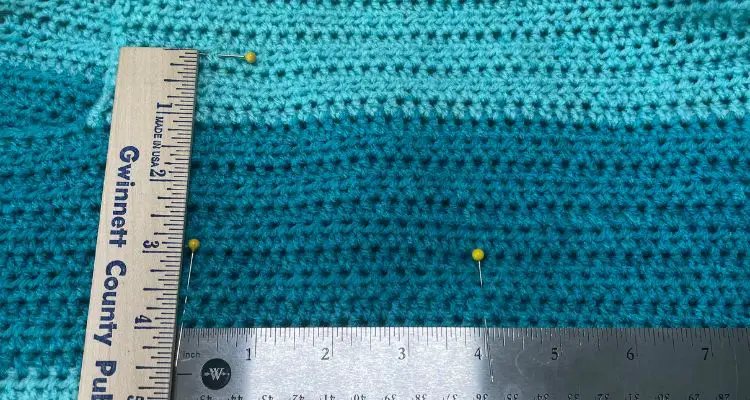

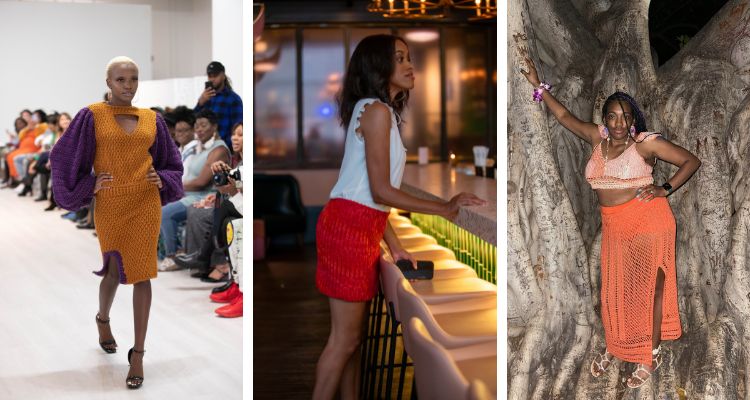
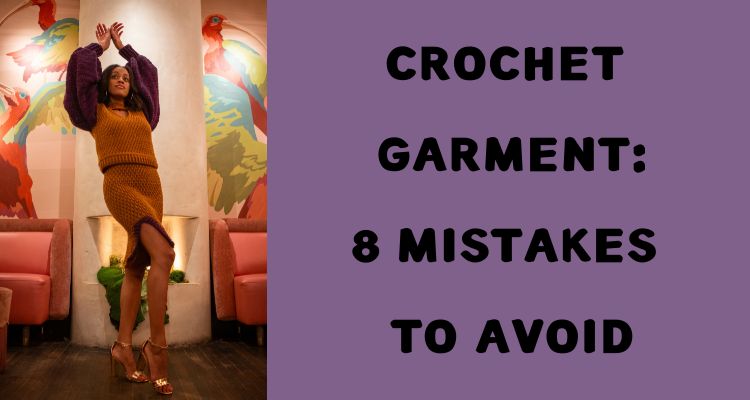
Happy crocheting!
Remember to bookmark this post for future reference or share it with your fellow crochet enthusiasts looking for the best yarn for their next project!
Pin it for Later
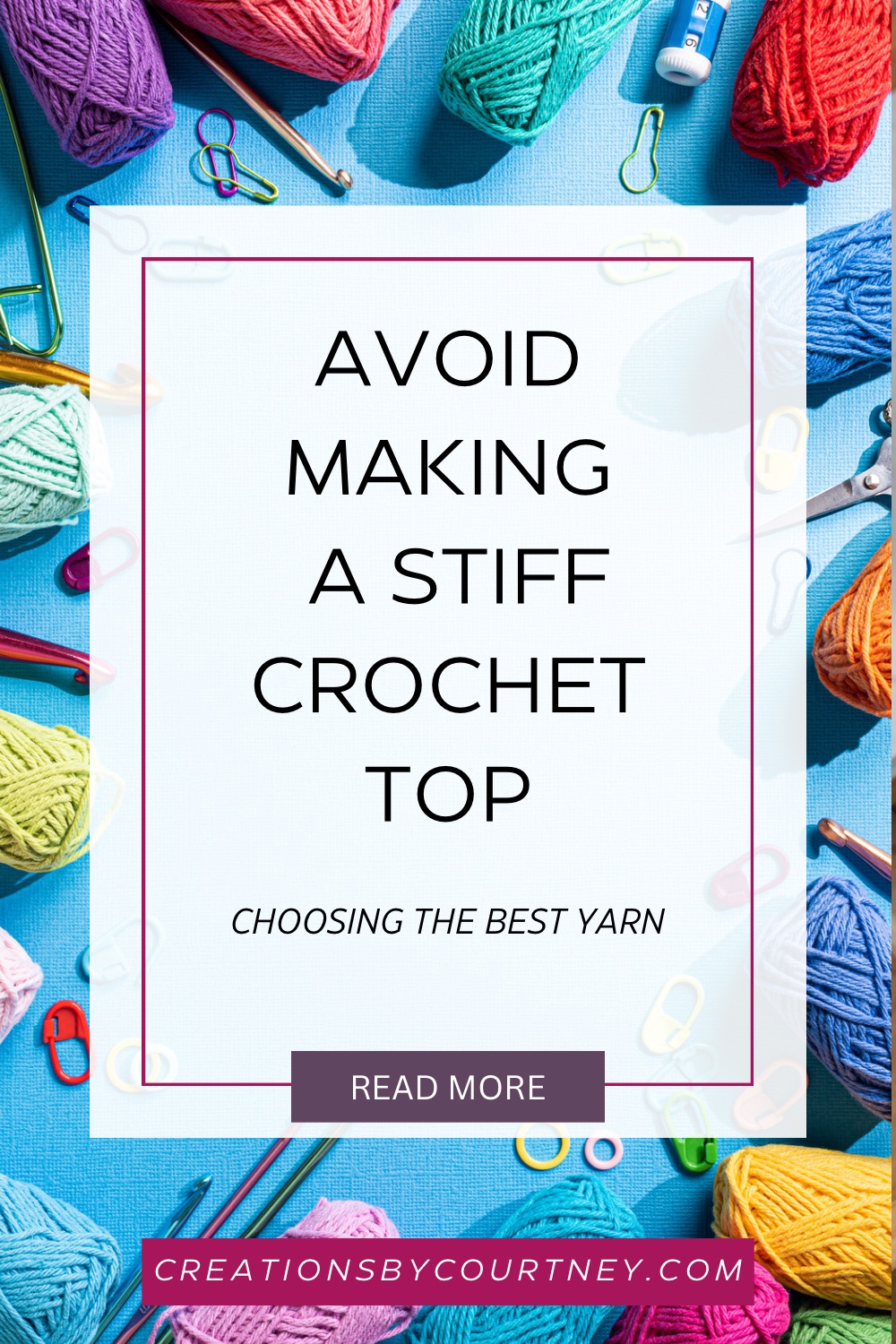
If we’re not yet connected, join the Creations by Courtney newsletter today and receive a cheat sheet for recording your body measurement to remove the guess work on what size to make for your next crochet top.
Like to connect on social media?
Follow me on Instagram, Facebook, YouTube and Pinterest.
Come hang with me and other crochet friends in the Creations by Courtney Community FB group.
